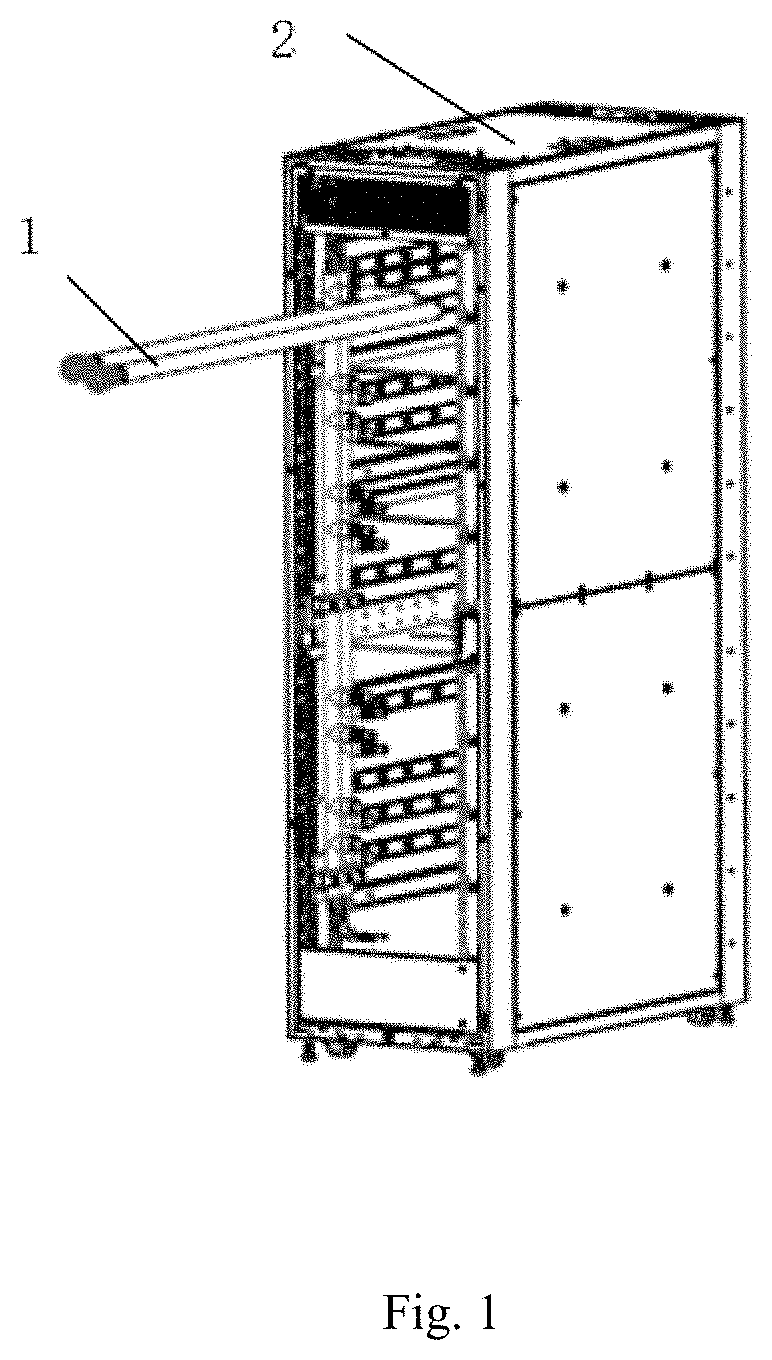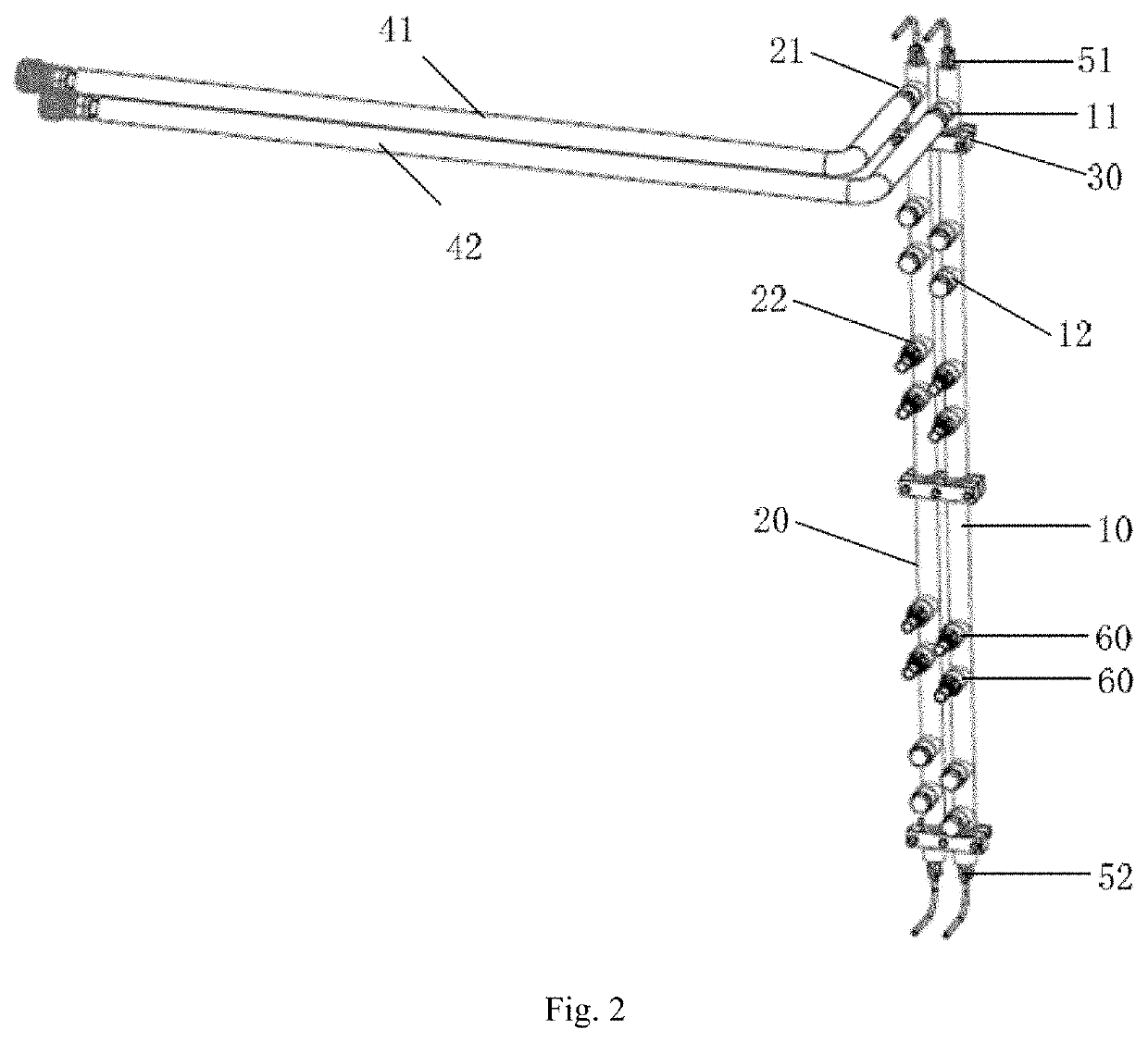Liquid-cooled cabinet manifold and liquid-cooled cabinet
a liquid-cooled cabinet and manifold technology, applied in the field of liquid-cooled cabinets, can solve the problems of increasing the computing power of the underlying hardware infrastructure, increasing the power consumption of servers, and significant increases in overall power consumption and heat generation
- Summary
- Abstract
- Description
- Claims
- Application Information
AI Technical Summary
Benefits of technology
Problems solved by technology
Method used
Image
Examples
Embodiment Construction
[0044]The Liquid-cooled cabinet manifold and liquid-cooled cabinet of the present invention will be described in greater detail below with reference to the accompanying drawings, which present a preferred embodiment of the invention. It would be appreciated that those skilled in the art can make changes to the invention disclosed herein while still obtaining the beneficial results thereof. Therefore, the following description shall be construed as being intended to be widely known by those skilled in the art rather than as limiting the invention.
[0045]For the sake of clarity, not all features of an actual implementation are described in this specification. In the following, description and details of well-known functions and structures are omitted to avoid unnecessarily obscuring the invention. It should be appreciated that in the development of any such actual implementation, numerous implementation-specific decisions must be made to achieve specific goals of the developers, such a...
PUM
 Login to View More
Login to View More Abstract
Description
Claims
Application Information
 Login to View More
Login to View More - R&D
- Intellectual Property
- Life Sciences
- Materials
- Tech Scout
- Unparalleled Data Quality
- Higher Quality Content
- 60% Fewer Hallucinations
Browse by: Latest US Patents, China's latest patents, Technical Efficacy Thesaurus, Application Domain, Technology Topic, Popular Technical Reports.
© 2025 PatSnap. All rights reserved.Legal|Privacy policy|Modern Slavery Act Transparency Statement|Sitemap|About US| Contact US: help@patsnap.com



